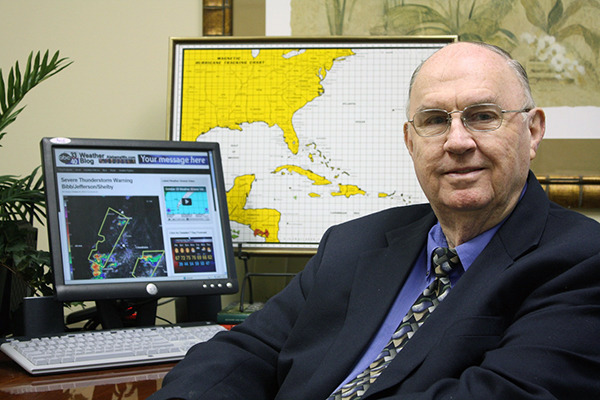The First TDS Warning
In 2002, a WSR-74C radar was donated to the University of Alabama – Huntsville. The radar is called ARMOR: the Advanced Radar for Meteorological and Operational Research.
In 2004, it was upgraded to dual-polarization capability. Radars typically send out and receive their electronic signals in the horizontal plane only. Dual-pol adds the vertical plane. This gives meteorologists quite a bit more data about the targets that the radar is “seeing” in the atmosphere, including size and shape. This can be very helpful in determining precipitation type and amounts.
One thing that researchers have found is that the data can sometimes differentiate the signature of debris being lofted into the air by a tornado that is on the ground. This can help confirm that a tornado is occurring when ground truth reports aren’t available, a great thing at night and in remote locations, or where terrain and trees limit visibility. The signature is called a Tornadic Debris Signature (TDS). We use them all the time today. There was clear evidence of one last night in Central Mississippi for example.
Researchers at UAH documented the first TDS in February 2008 in a pre-dawn F4 tornado during the Super Tuesday Outbreak in North Alabama.
On this date, meteorologists at UAH provided their first real time reports of a tornadic debris signature to the NWS to help issue a tornado warning for Marshall County in North Alabama as a tornado was doing damage in Albertville.
Category: Alabama's Weather, Met 101/Weather History
















